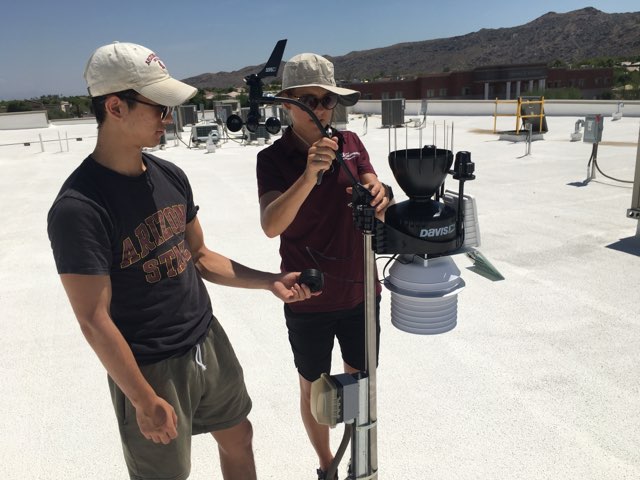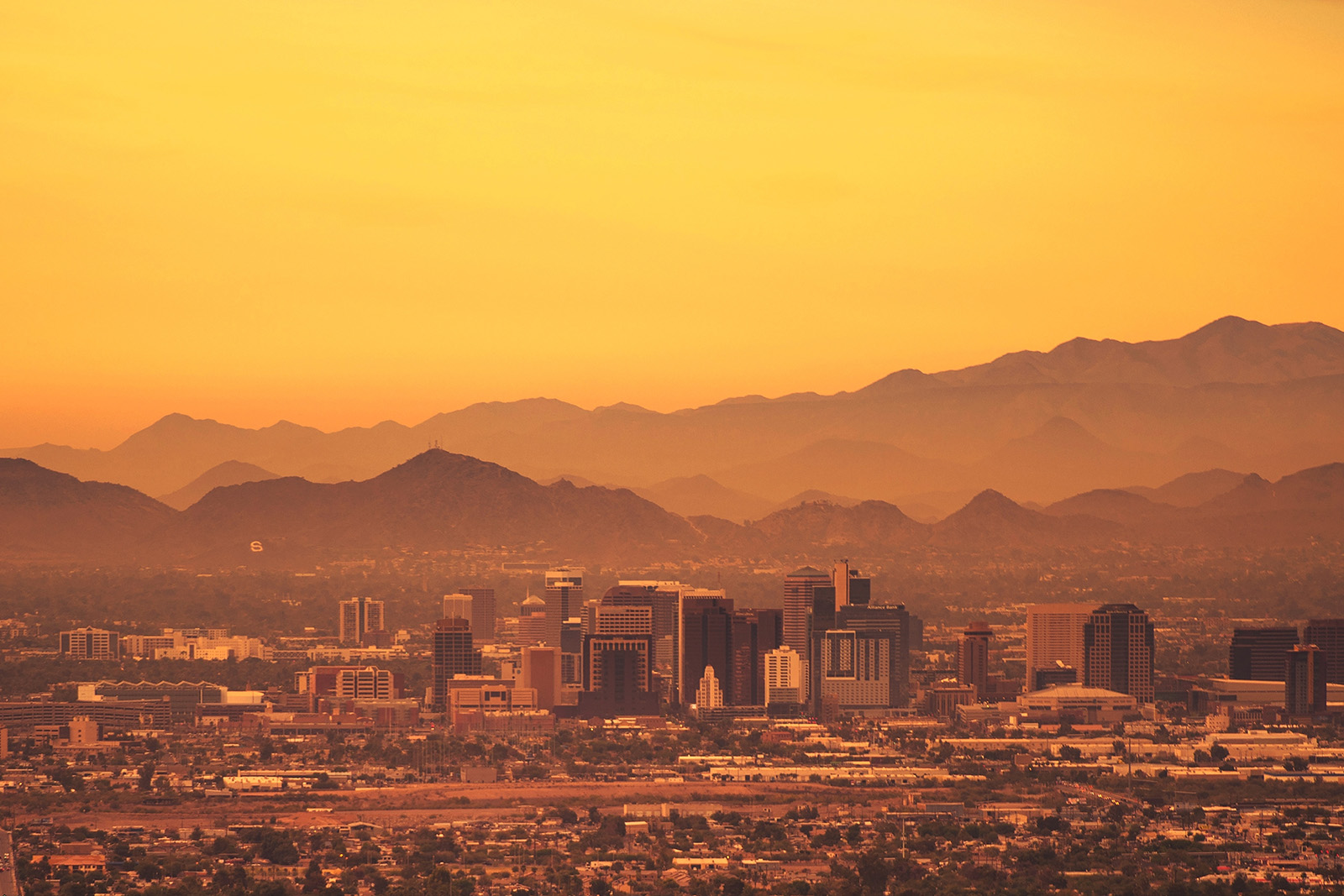Solutions-focused innovation for a healthier living environment
 The Healthy Urban Environments initiative at Arizona State University was focused on convening and translating evidence-based research and evaluation of heat mitigation and air-quality management efforts intro useful solutions that could be implemented across Maricopa County.
The Healthy Urban Environments initiative at Arizona State University was focused on convening and translating evidence-based research and evaluation of heat mitigation and air-quality management efforts intro useful solutions that could be implemented across Maricopa County.
The projects listed on this page represent work supported by HUE as part of its mission to coalesce and incubate research, policy and technology projects that have real-world applications for urban heat and air-quality solutions. These projects range from empirical field data collection and testing to developing policy tools and technologies that support governance and management interventions around urban heat and air-quality. Importantly, to ensure HUE achieved its commitment to place-based change, many of these projects actively involved Maricopa County stakeholders such as individuals, communities, elected and appointed officials, non-profits and private businesses.

AZ Heat Preparedness and
Resilience Workgroup
This Workgroup was created in the summer of 2020 to share heat forecasts and warnings with communities; highlight approaches to heat relief, communications strategies and resources; identify opportunities and gaps in heat-related research; and connect cities and counties to regional and state resources and information.


